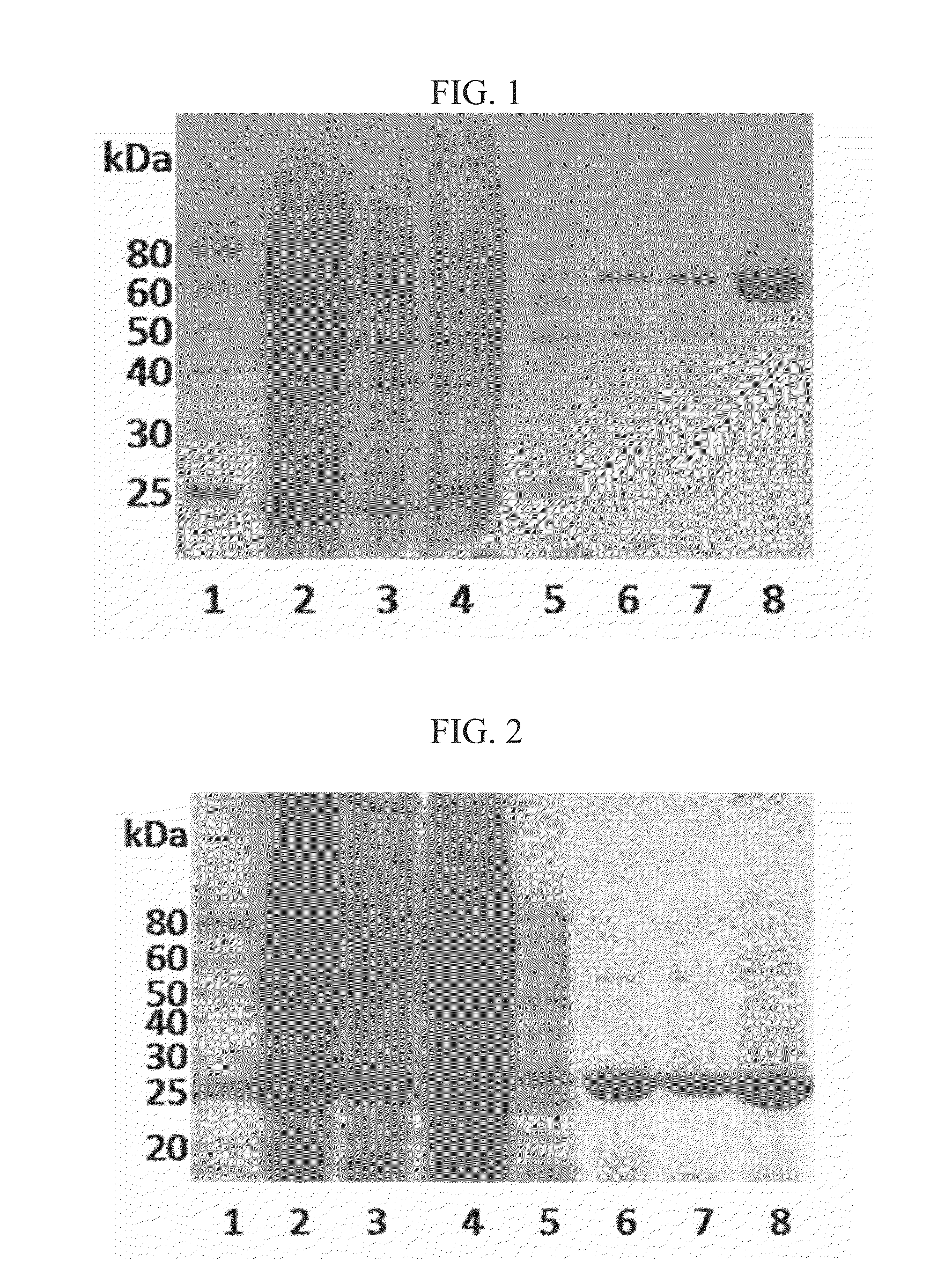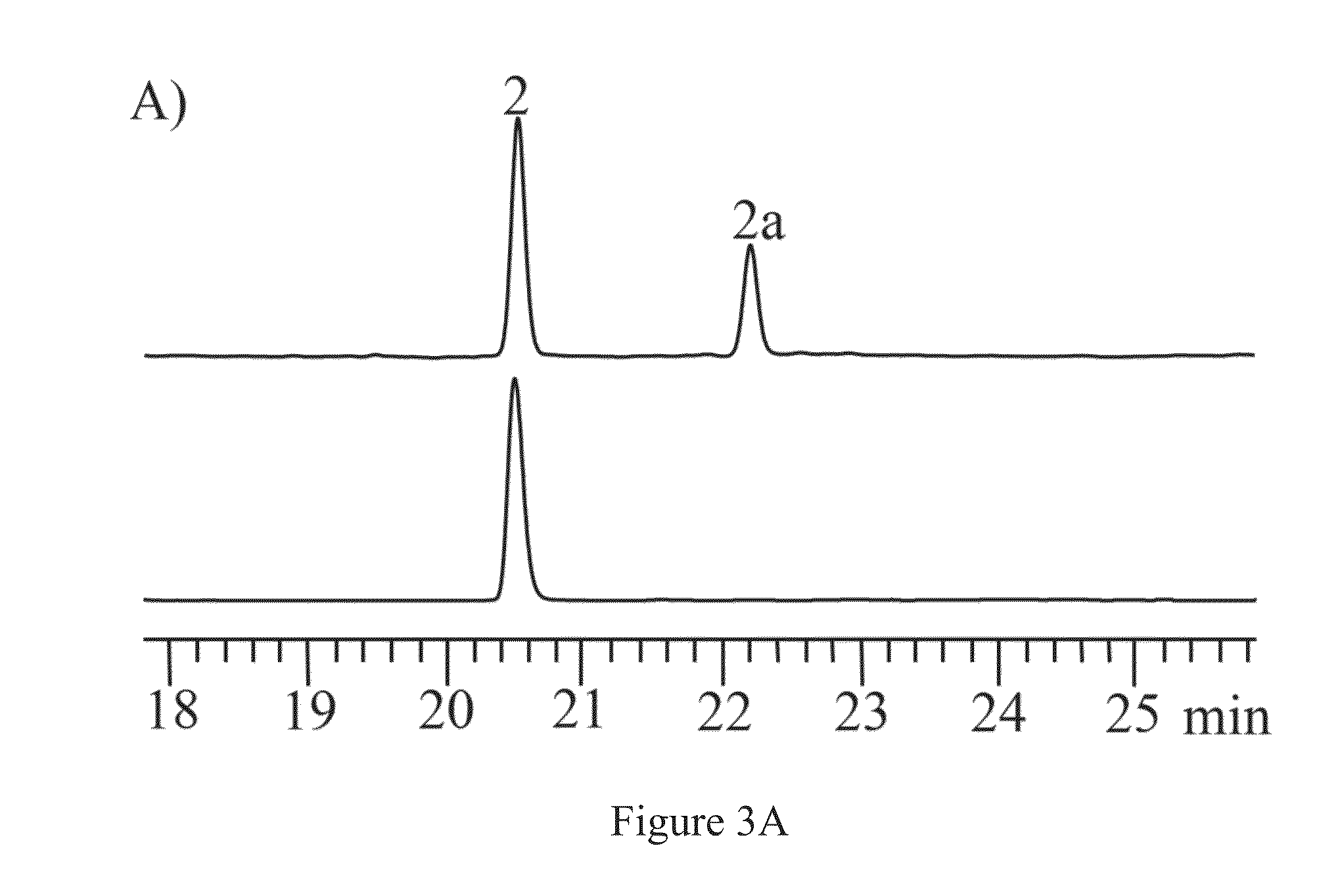Halogenation enzymes
a technology of halogenation enzymes and enzymes, applied in the field of biotechnology, can solve problems such as limited potential
- Summary
- Abstract
- Description
- Claims
- Application Information
AI Technical Summary
Benefits of technology
Problems solved by technology
Method used
Image
Examples
example 1
Synthesis of Halogenated Compounds
[0042]
[0043]Formula I shows monocillin I (compound 1) and radicicol (compound 1a), which are potent heat shock protein 90 (Hsp90) inhibitors isolated from various fungi. Compound 1a is a chlorine-containing resorcylic acid lactone (RAL). The radicicol biosynthetic gene cluster from two different radicicol producing fungi, Pochonia chlamydosporia and Chaetomium chiversii, have been recently reported, both containing a putative halogenase (rdc2-like or radH-like) that may be involved in the chlorination of the RAL structure, however, neither of these enzymes have been biochemically characterized. Their enzymatic properties remain unknown. Applicant has isolated a new fungal halogenase Rdc2 as set forth in SEQ ID NO. 2 from P. chlamydosporia, useful for structural modification of diverse halogenated products.
[0044]Referring now to FIG. 1, to biochemically characterize the Rdc2 halogenase of the present disclosure, the functional enzyme was obtained. It...
example 2
Analysis of Products
[0061]Products were analyzed and isolated on an Agilent 1200 high performance liquid chromatography (HPLC) instrument. Mass spectra of the compounds were collected by the same HPLC coupled with an Agilent 6130 Single Quad mass spectrometer. Nuclear magnetic resonance (NMR) spectra were recorded in CD3OD on a JEOL instrument (at 300 MHz for 1H NMR and 75 MHz for 13C NMR). The chemical shift (δ) values were referenced to the solvent signals for CD3OD (δH=3.31) and (δC=49.15) and were given in parts per million (ppm). The coupling constants (J values) were reported in Hertz (Hz).
[0062]E. coli XL 1-Blue and RIL were purchased from Stratagene (La Jolla, Calif., USA) for routine cloning and protein expression, respectively. T4 DNA ligase, 1 kb Plus DNA ladder, SuperScript® III First-Strand cDNA Kit and Platinum Pfx DNA polymerase were from Invitrogen (Carlsbad, Calif., USA). Restriction enzymes and protein ladder were purchased from New England Biolabs (Ipswich, Mass.,...
example 3
Expression and Purification of the Rdc2 as Set Forth in SEQ ID NO. 2
[0063]The radicicol producer strain P. chlamydosporia ATCC 16683 was grown in 50 mL of potato dextrose broth (PDB) at 28° C. for 4 days. The culture was filtered and the mycelium was ground in liquid nitrogen. The RNA was extracted from the ground mycelium using a RNeasy Plant Mini Kit from Qiagen. The resulting RNA was used as the template to synthesize the cDNA through a SuperScript® III First-Strand cDNA Kit from Invitrogen. The cDNA was subsequently used as the PCR template to clone the intron-free rdc2 gene. Primers included rdc2-5′-NdeI (AACATATGTCGGTACCCAAGTCTTG) and rdc2-3′-HindIII (AAAAGCTTTCAAACTTTGTTGAGGCCAA). The introduced restriction sites are shown in italics. The PCR product was digested with NdeI and HindIII and inserted into pET28a to yield pJZ54. The plasmid was transformed into E. coli RIL strain for protein expression. For 500 mL of liquid culture, the cells were grown at 37° C. in Luria-Bertani...
PUM
| Property | Measurement | Unit |
|---|---|---|
| Fraction | aaaaa | aaaaa |
| Fraction | aaaaa | aaaaa |
| Fraction | aaaaa | aaaaa |
Abstract
Description
Claims
Application Information
 Login to View More
Login to View More - Generate Ideas
- Intellectual Property
- Life Sciences
- Materials
- Tech Scout
- Unparalleled Data Quality
- Higher Quality Content
- 60% Fewer Hallucinations
Browse by: Latest US Patents, China's latest patents, Technical Efficacy Thesaurus, Application Domain, Technology Topic, Popular Technical Reports.
© 2025 PatSnap. All rights reserved.Legal|Privacy policy|Modern Slavery Act Transparency Statement|Sitemap|About US| Contact US: help@patsnap.com



